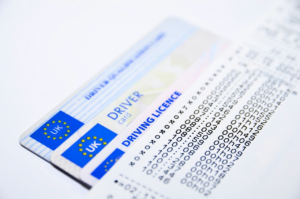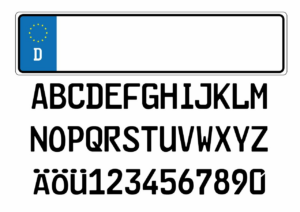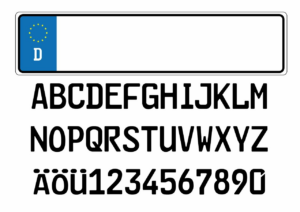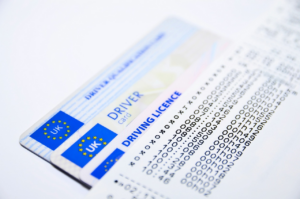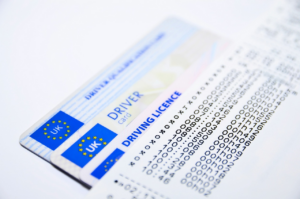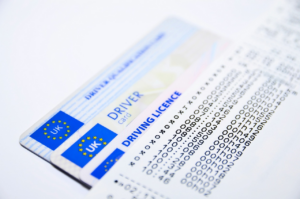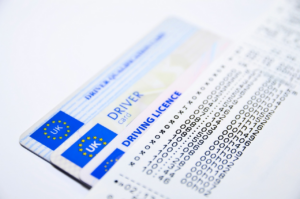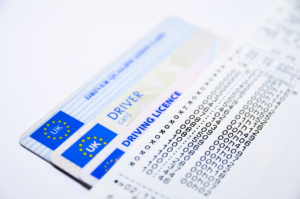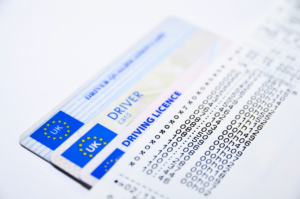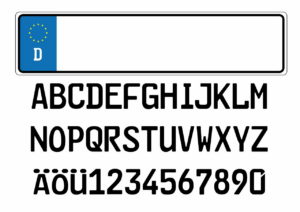If you’re looking to get your driver’s license in Ontario, you’ve come to the right place. Ontario’s driving license system can be overwhelming, but with the right information and guidance, you can navigate the process with ease.
This complete guide will provide you with all the information you need to know to obtain your Ontario driver’s license.
Firstly, it’s important to understand the eligibility requirements for getting a driver’s license in Ontario. You must be at least 16 years old to apply for a G1 license, which is the first step in Ontario’s graduated licensing program.
You’ll need to pass a written test and a road test to earn a G1 license, which allows you to drive with a fully licensed driver in the passenger seat. From there, you’ll progress to a G2 license, which allows you to drive on your own with some restrictions, and eventually to a full G license, which gives you full driving privileges.
This guide will take you through each step of the process, so you can obtain your Ontario driver’s license with confidence.
Introduction to Ontario’s Driving License System
Get ready to hit the road with this quick overview of how to get behind the wheel in the great province of Ontario.
To start, you’ll need to obtain a driver’s license. In Ontario, there are three types: G1, G2, and G.
The G1 license is the first step, allowing drivers to operate a vehicle only when accompanied by a fully licensed driver.
To obtain a driver’s license in Ontario, you must be at least 16 years old and pass a vision test, written test, and road test. The written test focuses on traffic laws and safe driving practices, while the road test assesses your ability to safely operate a vehicle.
Once you pass these tests, you’ll receive your G1 license and can begin practicing driving with a fully licensed driver.
The G2 license is the second step, allowing drivers to drive alone with some restrictions, such as a zero blood alcohol level.
From there, you can progress through the licensing system by completing driver education courses and passing additional tests until you obtain your full G license.
Finally, the G license is the full license, allowing drivers to operate any vehicle without restrictions.
Eligibility Requirements
So, you’re interested in getting an Ontario driver’s license? Great! Before you start, it’s important to know the eligibility requirements.
Firstly, you must be at least 16 years old to apply for a learner’s permit and at least 16 and a half years old to take the road test.
Secondly, you must be a resident of Ontario and provide proof of residency.
Lastly, you must meet certain medical requirements to ensure you’re fit to drive.
Age Requirements
If you’re not yet legally allowed to buy a drink, you can still get behind the wheel in Ontario with a driver’s license – but only if you meet the age requirements.
The minimum age requirement for a G1 license in Ontario is 16 years old. This license is considered a learner’s permit and comes with certain restrictions, such as having to drive with a licensed driver who has at least four years of driving experience and a blood alcohol level of 0.05 or less.
Once you’ve held your G1 license for at least 12 months and passed a road test, you can upgrade to a G2 license. The minimum age requirement for a G2 license is 17 years old. With a G2 license, you have more freedom to drive on your own, but still have some restrictions, such as not being allowed to drive between midnight and 5 a.m. and having a blood alcohol level of 0.05 or less.
When you turn 18 years old and have held your G2 license for at least 12 months, you can take another road test to obtain your full G license, which has no restrictions.
It’s important to note that the age requirements may vary depending on the type of license you’re applying for, so it’s a good idea to check the Ontario Ministry of Transportation website for the most up-to-date information.
Residency Requirements
Before hitting the road in Canada, it’s important to know the residency requirements that come with obtaining a driver’s license.
To be eligible for an Ontario driver’s license, you must be a resident of Ontario. This means that you must have a permanent address in Ontario and live there for at least 6 months in a calendar year.
If you’re a student or a temporary resident, you may also be eligible to apply for an Ontario driver’s license, but you must provide proof of your status in Canada, such as a study permit or work visa.
To prove your residency in Ontario, you’ll need to provide documents such as a valid Ontario health card, a utility bill, or a rental agreement in your name.
It’s important to note that if you move out of Ontario, you must notify the Ministry of Transportation within 6 days of your move, and surrender your Ontario driver’s license. Failure to do so can result in fines and legal consequences.
By understanding the residency requirements for an Ontario driver’s license, you’ll be better prepared to hit the road with confidence and ensure that you’re driving legally and safely.
Medical Requirements
Now, let’s talk about the medical requirements you need to know before you hit the road in Canada.
When applying for an Ontario driver’s license, you may need to provide a medical report to prove that you’re medically fit to drive. This is especially true if you have a medical condition that could affect your ability to drive safely, such as seizures, diabetes, or vision problems.
To obtain a medical report, you’ll need to visit a doctor who’s authorized to perform driver medical exams. The doctor will evaluate your overall health and assess whether you’re fit to drive. If you have a medical condition that could affect your ability to drive, the doctor may impose certain restrictions on your license, such as requiring you to wear corrective lenses or only allowing you to drive during certain times of the day.
It’s essential to disclose any medical conditions you may have when applying for your driver’s license to ensure that you’re driving safely and responsibly.
Applying for a Driving License
To apply for a driving license in Ontario, you need to bring certain documents with you to the licensing office. These documents include proof of identity, residency, and legal status in Canada.
You can apply for your license at any ServiceOntario location, and fees will vary depending on the type of license you’re applying for.
Required Documents
You’ll need a few different documents to make sure you’re ready to hit the road legally, so let’s take a look at what you’ll need!
First and foremost, you’ll need to bring in some identification. This can be your passport, birth certificate, or any other government-issued ID that proves your identity. You’ll also need to bring in your Social Insurance Number (SIN) to verify your identity and residency.
In addition to identification, you’ll need to bring in a completed Driver’s License Application Form. This form can be found online or at a ServiceOntario location and must be filled out completely and accurately.
You’ll also need to bring in proof of your legal name, date of birth, and your signature. This can be in the form of a birth certificate, passport, or any other government-issued document that shows this information.
Lastly, you’ll need to bring in proof of residency, such as a utility bill or lease agreement, to show that you live in Ontario.
With all of these documents in hand, you’ll be well on your way to obtaining your Ontario driver’s license.
Where to Apply
Looking to hit the road legally? Check out where to apply for your driver’s license!
Applying for an Ontario driver’s license can be done in three ways: online, in-person, or by mail. Here are the details you need to know about each option:
-
Online: This option is available for those who already have an Ontario photo card or driver’s license. You can renew, replace, or change your address online through the ServiceOntario website. Payment can be made through credit card or Interac online. Your new license will be mailed to you within 4-6 weeks.
-
In-person: If you prefer to apply in person, you can visit any ServiceOntario center. You will need to bring your identification documents and payment. After completing the necessary forms and tests, you will receive your driver’s license on the same day.
-
By mail: This option is available for those who are unable to visit a ServiceOntario center. You can download the application form from the ServiceOntario website and mail it along with your identification documents and payment. Your new license will be mailed to you within 4-6 weeks.
No matter which option you choose, make sure to bring all the required documents and payment to avoid any delays. With your new driver’s license, you’ll be ready to hit the road and explore all that Ontario has to offer!
Fees
Now it’s time to talk about the fees, so let’s break down what you’ll need to pay to get on the road legally. The cost of getting an Ontario driving license can vary depending on a few factors such as age, type of license, and length of time the license is valid for. Here is a breakdown of the fees you can expect:
| Type of License | Fee |
|---|---|
| G1 License | $158.25 |
| G2 License | $89.25 |
| Full G License | $90.00 |
| 5-Year License Renewal | $90.00 |
| 10-Year License Renewal | $150.00 |
It’s important to note that these fees are the standard fees and may be subject to change. Additionally, there may be additional fees for road tests, vision tests, and knowledge tests. It’s best to check with your local Service Ontario location for the most up-to-date fees and requirements. Keep in mind that while the fees may seem steep, investing in your driving skills and safety is well worth it in the long run.
Overall, the fees for an Ontario driving license can add up, but it’s important to remember that these fees are necessary for ensuring that drivers are properly trained and licensed to operate a vehicle. By following the rules of the road and practicing safe driving habits, you’ll not only save money on potential fines or accidents, but also ensure the safety of yourself and those around you on the road.
Written Test
The written test section requires a thorough understanding of road signs and rules. It’s important that you study the Ontario Driver’s Handbook thoroughly before taking the test. The handbook provides a comprehensive guide to road signs, traffic laws, and safe driving practices. This will help you to understand the rules of the road and ensure that you’re well-prepared for the written test.
During the written test, you’ll be required to answer multiple-choice questions about road signs, traffic laws, and safe driving practices. The test includes 40 questions and you must score at least 80% to pass. The questions are designed to test your knowledge of the rules of the road and your ability to apply them in real-world situations.
It’s important to remain calm and focused during the test, and to take your time reading and answering each question. With the right preparation and a thorough understanding of the material, you can pass the written test and move on to the next stage of obtaining your Ontario driver’s license.
G1 Road Test
You’re about to take the G1 road test – get ready to prove to yourself and others that you have what it takes to be a safe and confident driver on the road.
The G1 road test is the first step in obtaining your full driver’s license in Ontario. It’s important to prepare yourself by practicing your driving skills and reviewing the rules of the road.
During the G1 road test, you will be evaluated on your ability to safely operate a vehicle in a variety of situations. You will need to demonstrate your knowledge of traffic laws, road signs, and safe driving practices.
Be sure to arrive early, bring all required documentation, and have a well-maintained vehicle for the test. Remember to stay calm and focused, and don’t hesitate to ask the examiner any questions you may have.
Passing the G1 road test is a significant milestone towards becoming a licensed driver in Ontario, so take the time to prepare and give it your best effort.
G2 Road Test
It’s time to tackle the G2 road test – show off your skills and prove that you’re ready for the next step towards becoming a fully licensed driver.
The G2 road test is the second stage of Ontario’s graduated licensing system. It’s designed to test your ability to drive independently and safely on the road, with less supervision than the G1 road test.
During the G2 road test, you’ll be expected to demonstrate proficiency in a variety of driving skills, including merging, changing lanes, turning, and parallel parking. You’ll also be evaluated on your ability to make safe decisions on the road, including following the rules of the road, checking blind spots, and reacting appropriately to different driving situations.
Don’t forget to bring your valid G1 license, a properly insured and registered vehicle, and any required documents.
Good luck on your G2 road test!
Full G License
Now that you’ve passed your G2 road test, it’s time to focus on obtaining your full G license and unlocking even more driving opportunities.
The full G license allows you to drive any vehicle on the road, including large trucks and buses. With this license, you can also drive on any road, including highways and other high-speed roads.
To obtain your full G license, you must hold your G2 license for at least 12 months without any suspensions or violations. You must also complete a mandatory driver’s education course, which includes in-class instruction and in-car training.
Once you have completed the course, you can book your G road test, which is the final step in obtaining your full G license. The road test assesses your ability to drive safely and confidently in different traffic situations, including highway driving, busy city streets, and rural roads.
With your full G license, you can enjoy the freedom and flexibility of driving anywhere in Ontario, and even across the country.
Tips for Safe and Confident Driving in Ontario
Looking to boost your driving skills and confidence on the road? Check out these essential tips for safe and confident driving in the great province of Ontario!
Firstly, always obey traffic laws and signals. This includes following the speed limit, stopping at stop signs, and yielding to pedestrians. It may seem like common sense, but many accidents occur due to drivers not following these basic rules of the road.
Additionally, make sure to always wear your seatbelt and ensure all passengers in the car do as well. Not only is it the law, but it can also save lives in the event of an accident.
Lastly, avoid distracted driving. This means avoiding texting, talking on the phone, or any other activity that takes your attention away from the road. It only takes a split second of distraction to cause a serious accident.
Remember, safe and confident driving takes practice and patience. By following these tips, you can reduce your risk of accidents and feel more secure behind the wheel.
Frequently Asked Questions
What happens if I fail my G1 or G2 road test?
If you fail your G1 or G2 road test in Ontario, don’t worry, you can try again.
You’ll need to wait at least 10 days before retaking the test, and you’ll have to pay the fee again.
It’s important to take some time to reflect on what went wrong during your first attempt, so you can improve your skills and increase your chances of passing the next time around.
Consider booking more driving lessons, practicing in different weather conditions, or reviewing the rules of the road to help you prepare.
Remember, passing your road test takes time and practice, so don’t get discouraged if you don’t pass on your first try.
Keep working at it, and you’ll get there eventually.
Is there a limit to the number of times I can take the written test?
You can take the written test as many times as you need to pass it. There’s no limit to the number of times you can take the test, so don’t worry if you don’t pass on your first attempt.
However, it’s important to note that there is a fee each time you take the test, so it’s in your best interest to study and prepare thoroughly before taking the test.
Make sure you understand the rules of the road, traffic signs and signals, and safe driving practices. With enough preparation and practice, you’ll be able to pass the written test and move on to the next step in obtaining your Ontario driver’s license.
Can I use a foreign driver’s license to drive in Ontario?
Yes, you can use a foreign driver’s license to drive in Ontario, but only for a limited time. If you are a visitor to Ontario, you can use your foreign driver’s license for up to 60 days. If you plan to stay in Ontario for longer than 60 days, you’ll need to get an Ontario driver’s license.
To do that, you’ll need to take a written test, a vision test, and a road test. Keep in mind that the process to get an Ontario driver’s license can take a few weeks, so plan accordingly. Additionally, if your foreign driver’s license isn’t in English or French, you’ll need to get an official translation of the license before you can use it in Ontario.
How long does it take to receive my physical driving license after passing the road test?
Congratulations on passing your road test! You’re likely eager to receive your physical driving license and hit the road.
In Ontario, it typically takes 4-6 weeks to receive your license in the mail. However, processing times may vary depending on the volume of applications being processed and any additional requirements that may need to be fulfilled.
In the meantime, you can continue to use your temporary driver’s license, which is valid for up to 90 days after passing your road test. If you have any concerns about the status of your license, you can contact ServiceOntario for updates.
What should I do if I get a traffic ticket while holding a G license?
If you get a traffic ticket while holding a G license in Ontario, the first thing you should do is read the ticket carefully and make sure you understand what you’re being charged with.
You may choose to plead guilty and pay the fine, or you may wish to fight the ticket in court. If you decide to fight the ticket, you’ll need to request a trial date and prepare your case.
It’s important to remember that getting a traffic ticket can affect your insurance rates and driving record, so it’s always best to drive safely and obey all traffic laws.
If you have any questions or concerns about traffic tickets, it’s a good idea to consult with a legal professional who can help you navigate the process.
Conclusion
Congratulations, you’ve made it to the end of our complete guide to Ontario’s Driving License System! You now have a solid understanding of what it takes to obtain your G license and start driving confidently and safely on Ontario’s roads.
Remember, the most important thing when it comes to driving is to always stay focused, alert and aware of your surroundings. Keep in mind the tips we’ve shared throughout this guide and continue to educate yourself on safe driving practices.
By doing so, you’ll not only become a better driver, but you’ll also be doing your part in making Ontario’s roads a safer place for everyone.
So, get out there and start practicing, and before you know it, you’ll be cruising down the highway with ease and confidence. Good luck!







